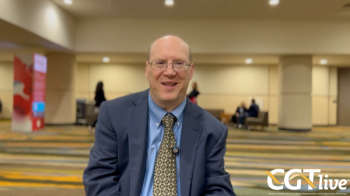
#17: Gene Therapy and its Potential in Macular Degeneration
Gene therapy first hit the radar of retinal physicians in 2008, when three independent research groups reported that patients with Leber's congenital amaurosis, a rare genetic retinal disease, had been successfully treated using gene therapy with adeno-associated virus (AAV).
Gene therapy first hit the radar of retinal physicians in 2008, when three independent research groups reported that patients with Leber's congenital amaurosis, a rare genetic retinal disease, had been successfully treated using gene therapy with adeno-associated virus (AAV).
Since then, a host of researchers have begun to explore the potential use of gene therapy in, among other conditions, age-related macular degeneration (AMD). Current research is primarily focused on cutting down the current need for frequent administration of an anti-vascular endothelial growth-factor (VEGF) agent to just a single, subretinal injection.
Gene therapy is a promising area of ongoing research in patients with macular degeneration.
Gene therapy is not, as often misconstrued, limited to the treatment of genetic diseases, but is rather a treatment modality in which genetic material is introduced into cells, either to compensate for an abnormal gene or to make a beneficial protein. Current gene therapy trials in AMD focus on this second area.
A handful of phase I gene therapy trials of VEGF-binding proteins were completed with promising results in small numbers of patients with AMD. However, results from a phase II trial reported in July 2015 of Avalanche Biosciences' AVA-101 in wet AMD have stemmed a bit of the momentum. In that trial, while the primary endpoint of safety (as determined by number of complications at 1 year vs. placebo) was met, results from secondary efficacy goals such as visual acuity and reducing retinal thickness were not as impressive. Based on these results, a planned phase IIB trial was halted.
Nonetheless, several additional phase II trials testing other gene therapy technologies have recently opened to enrollment. Two of these trials are focusing on cell therapy for atrophic AMD while a third is focused on patients with geographic atrophy secondary to AMD.
Newsletter
Stay at the forefront of cutting-edge science with CGT—your direct line to expert insights, breakthrough data, and real-time coverage of the latest advancements in cell and gene therapy.











































